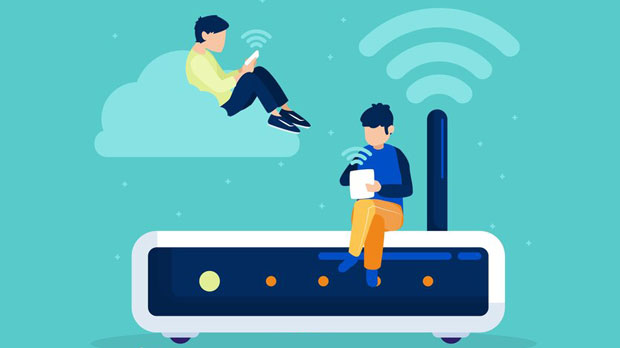In the world of proxy services, HTTP and HTTPS support are crucial considerations when choosing a proxy provider. The support for these protocols determines how secure, reliable, and versatile the proxy service is in handling various types of internet traffic. In this article, we will compare the HTTP and HTTPS support capabilities of two popular proxy providers, PYPROXY and Iproyal. This comparison will analyze key features such as security, performance, compatibility, and scalability to provide a detailed understanding of how each provider supports these protocols. By understanding these differences, users can make more informed decisions when selecting the right proxy for their needs. 1. Understanding the Importance of HTTP and HTTPS in Proxy ServicesBefore diving into the comparison, it is essential to understand the core difference between HTTP and HTTPS protocols, and why proxy services need to support them effectively. - HTTP (HyperText Transfer Protocol): HTTP is the foundation of data communication on the web. It is an unsecured protocol, meaning that data transmitted using HTTP can be intercepted or tampered with. While it is still commonly used for non-sensitive applications, its lack of encryption makes it unsuitable for secure communications.- HTTPS (HyperText Transfer Protocol Secure): HTTPS is the secure version of HTTP. It uses SSL/TLS encryption to protect the data during transmission. This encryption ensures that the data remains private and secure, making it the preferred protocol for sensitive transactions, such as online banking, e-commerce, and login pages.Proxy providers must handle both protocols efficiently, ensuring security for HTTPS traffic and performance for HTTP traffic. Now, let’s compare the HTTP and HTTPS support capabilities of Pyproxy and Iproyal.2. Pyproxy's HTTP and HTTPS SupportPyproxy offers a range of proxy services with support for both HTTP and HTTPS protocols. Below is a detailed breakdown of how Pyproxy handles each protocol:- HTTP Support: Pyproxy offers robust support for HTTP proxies. These proxies are ideal for users who need to access websites without the need for encryption. This is particularly useful for web scraping, browsing anonymously, or accessing content that doesn’t require a high level of security. Pyproxy’s HTTP proxies are fast and capable of handling large volumes of traffic. However, because HTTP is not encrypted, users must be cautious when using these proxies for sensitive tasks.- HTTPS Support: Pyproxy also provides strong HTTPS support. With HTTPS proxies, data is encrypted during transmission, ensuring that sensitive information remains secure. This feature is essential for users who are conducting secure transactions, such as logging into accounts or performing financial operations. Pyproxy’s HTTPS proxies are known for their high security, and they maintain good speed even when encryption is applied. However, users should expect slightly slower performance compared to HTTP proxies, as encryption can add overhead.3. Iproyal’s HTTP and HTTPS SupportIproyal is another well-known proxy provider that supports both HTTP and HTTPS protocols. Let’s take a closer look at how Iproyal handles these protocols:- HTTP Support: Iproyal’s HTTP proxies are highly reliable, offering fast and stable connections. These proxies are ideal for activities like web scraping, content access, and data extraction, where security is not a primary concern. Iproyal’s HTTP proxies are optimized for performance, providing users with quick and efficient browsing. However, as with Pyproxy, users should be aware that HTTP proxies do not offer the same level of security as HTTPS proxies.- HTTPS Support: Iproyal’s HTTPS proxies are designed to offer the highest level of security. With SSL/TLS encryption, these proxies ensure that users’ data is protected during transmission. Iproyal’s HTTPS proxies are excellent for secure transactions, such as online shopping or account management. The performance of Iproyal’s HTTPS proxies is generally good, but users may notice a slight decrease in speed due to the encryption process. Despite this, Iproyal offers a reliable and secure solution for users who prioritize privacy and security.4. Security Comparison: Pyproxy vs. IproyalSecurity is one of the most critical factors when choosing a proxy provider, especially for HTTPS support. Let’s compare the security features of Pyproxy and Iproyal:- Pyproxy Security Features: Pyproxy employs high-level encryption for its HTTPS proxies, ensuring that all data transmitted via HTTPS is securely encrypted. This makes it a reliable choice for users who need to conduct secure activities online. Pyproxy also offers advanced security features such as IP rotation and automatic HTTPS support, which further enhances the security of the proxy service.- Iproyal Security Features: Iproyal also provides robust security for HTTPS proxies, including SSL/TLS encryption. Their HTTPS proxies are known for offering strong protection against potential threats, making them an excellent choice for secure browsing and transactions. Iproyal also implements security measures such as IP masking and secure proxy routing to protect user privacy.Both Pyproxy and Iproyal offer high levels of security, but Iproyal is slightly more focused on providing comprehensive security features, making it a better choice for users who prioritize advanced protection.5. Performance and Speed: Pyproxy vs. IproyalWhen it comes to proxy services, speed and performance are crucial for a seamless browsing experience. Let’s compare the performance of Pyproxy and Iproyal for both HTTP and HTTPS traffic:- Pyproxy Performance: Pyproxy is known for its fast and stable proxies, particularly in the case of HTTP traffic. Users will notice little to no lag when using Pyproxy’s HTTP proxies. However, for HTTPS proxies, the added encryption can lead to a slight reduction in speed. Despite this, Pyproxy maintains relatively good performance for HTTPS traffic and ensures that users can securely browse without significant delays.- Iproyal Performance: Iproyal’s proxies are optimized for performance, and users will experience fast browsing, especially when using HTTP proxies. However, like Pyproxy, Iproyal’s HTTPS proxies may exhibit slightly reduced speeds due to the encryption process. Despite this, Iproyal’s infrastructure is designed to handle high traffic volumes without compromising performance.Both providers offer solid performance, but users should expect slightly slower speeds when using HTTPS proxies, as encryption introduces additional processing overhead.6. Compatibility and Use Cases: Pyproxy vs. IproyalThe compatibility of proxy services with different use cases is another critical consideration. Let’s explore how Pyproxy and Iproyal stack up in terms of compatibility:- Pyproxy Compatibility: Pyproxy supports a wide range of use cases, from basic web browsing to complex data scraping. Its HTTP proxies are well-suited for non-sensitive tasks, while its HTTPS proxies provide the necessary security for more sensitive activities. Pyproxy is compatible with most websites and platforms, making it a versatile option for users with various needs.- Iproyal Compatibility: Iproyal also offers broad compatibility with different use cases. Whether for social media management, web scraping, or secure browsing, Iproyal’s HTTP and HTTPS proxies work well with most online platforms. Iproyal’s proxies are especially useful for users who require high security and privacy, making them a good choice for sensitive operations.Both Pyproxy and Iproyal offer robust support for HTTP and HTTPS protocols, with each provider excelling in different areas. Pyproxy is ideal for users looking for fast performance with an emphasis on flexibility, while Iproyal shines in providing advanced security features and consistent speed across both protocols. Ultimately, the choice between Pyproxy and Iproyal depends on your specific needs: if security is your top priority, Iproyal’s HTTPS proxies may be the better choice. However, if performance and speed are more important, Pyproxy may be the ideal provider for your proxy needs.
Sep 15, 2025






















































